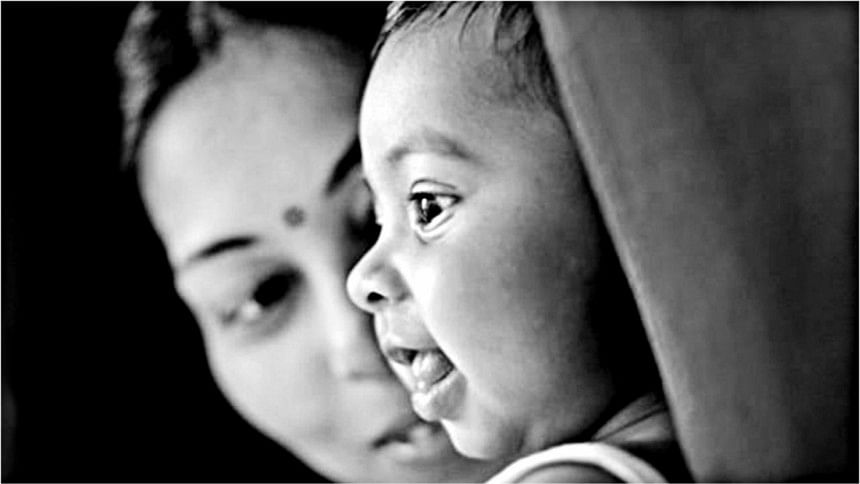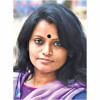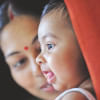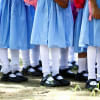Looking beyond the numbers

A teenage girl named Zannat used to come to our house in Mirpur occasionally to help my mother with household work, some six or seven years ago. I'll never forget her ever-smiling face. She would come during Eid days, Shab-e-Barat, or Ramadan. I don't quite remember when she stopped coming to our house. A few years ago, I came to know from her elder sister that she died after giving birth to a baby girl. Her sister could not tell me the cause of her death. She said Zannat was never taken to any medical facility during or after delivery.
One or two years after Zannat's death, her elder sister (known to all by the name Siddiqer ma) also died after she gave birth to a baby girl, due to severe bleeding. She was in her early forties. The baby was delivered at home without the help of any medical practitioner. Her relatives said she had never gone to a doctor during her pregnancy.
In a span of five years, the two sisters had met untimely deaths due to childbirth related complications. Neither of these deaths were documented.
Recently, a leading Bangla daily has reported, based on their investigation, that the maternal mortality rate (MMR) in Bangladesh has not dropped in the last two years. In fact, it has increased. The report came as a big surprise in the backdrop of reports and discussions over the years that have made us think that Bangladesh has been doing quite well in reducing child and maternal mortality rate. We were hopeful that by 2030 Bangladesh would be able to reduce maternal mortality rate down to 70 per every 100,000 live births, which is the Sustainable Development Goal (SDG) – 3. But now we have come to know that we have actually failed to achieve even the Millennium Development Goal (MDG) – 5. In order to achieve the MDG-5, the MMR should have come down to 143 per one lakh live births by 2015. Since we have failed to achieve the MDG-5 by 2015, it seems, achieving SDG-3 will be quite a challenge because in order to achieve that target, we would have to reduce MMR by 64 percent in the next 12 years (Prothom Alo, November 9).
According to WHO, the maternal mortality rate came down to 176 per 100,000 live births in 2015 from about 399 in 2000 in Bangladesh—the fourth highest drop in the region. And the UNDP's Human development report 2016 has revealed that in 2015 the ratio was 178 in Pakistan and 258 in Nepal. Clearly, we did better when compared to some other South Asian countries, yet we still could not meet MDG-5.
The reasons behind this setback are many. Although we hear all the time that more and more expectant mothers are taking medical assistance during their pregnancy, there are still a large number of women giving birth at home, without any assistance from any birth attendant. Medical practitioners and organisations who work with maternal health have said at a roundtable held at The Daily Star in 2016 that in Bangladesh only 42 percent of deliveries are attended by skilled birth attendants, and only 38 percent of deliveries take place at medical facilities. And the percentage of home deliveries stands at 63 percent. Therefore, Bangladesh needs well educated and trained midwives to attend to the expectant mothers who do not even go to see a doctor during the entire period of their pregnancy.
The two major causes of maternal death in the country are eclampsia (high blood pressure during the advance stage of pregnancy) and postpartum haemorrhage (severe bleeding after childbirth). According to the WHO, in 2015 there were an estimated 5,500 maternal deaths in the country, and postpartum haemorrhage was the main cause of these deaths. What is tragic is that such deaths are preventable. A study done by the Lancet, a UK-based medical journal, has found that there is a low-cost and widely available drug named tranexamic acid (TXA) which could save the lives of 1 in 3 mothers who would otherwise die from excessive bleeding after childbirth.
Moreover, early marriage is another reason for the increase in the maternal mortality rate. The risk of death from pregnancy related complications are extremely high among girls who get pregnant before 18 years of age. Thus, if we want maternal mortality rate to drop child marriage must be prevented. Also, annulment of the special provision in the Child Marriage Restraint Act 2017 is a must. Because under this provision, a girl can be married off even if she is not 18 under "special circumstances."
In addition, a dearth of doctors, nurses and other skilled health care workers in rural areas still remains a major challenge in reducing maternal mortality rate. For safe childbirth in rural areas such skilled medical practitioners must be made available at the upazila level.
As the daily Prothom Alo has reported, the number of maternal deaths could actually be much higher than the government estimates, as a large number of pregnant women remain unregistered. According to the abovementioned report, government officials working at the field level do not even register all the cases of maternal deaths. Also, there is little information about expectant mothers who live in remote areas. Therefore, registering pregnant mothers across the country and bringing them under antenatal care is very important in order to reduce maternal deaths.
The cases of Zannat and her elder sister are blatant examples of deaths not documented. If these deaths are any indication, there must be countless such cases throughout the country. A country that has a long way to go before we can claim we have done enough to reduce maternal deaths.
Naznin Tithi is a member of the editorial team at The Daily Star.

 For all latest news, follow The Daily Star's Google News channel.
For all latest news, follow The Daily Star's Google News channel. 








Comments